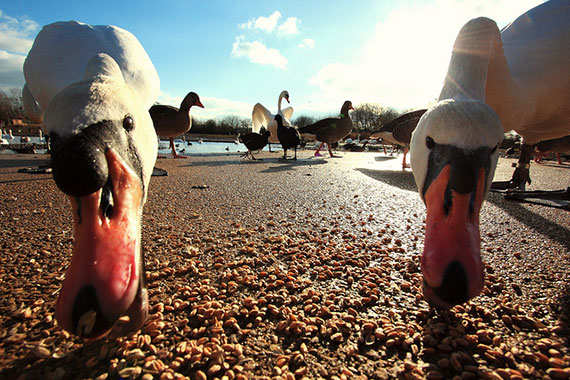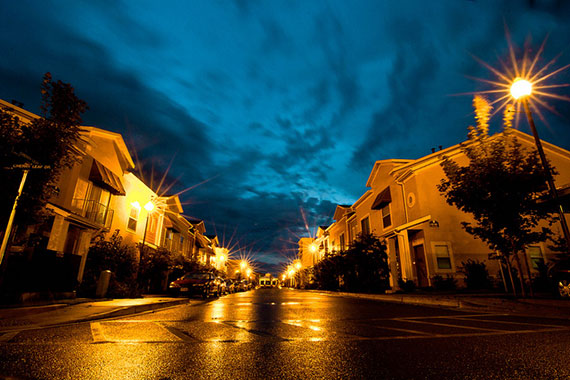One of the most popular angles to shoot is from the photographer’s standing point of view. While is fine with landscape and other general purpose photography, it does not create high impact visually arresting images.

Photo by kennysarmy; ISO 100, f/9.0, 1/320-second exposure.
Most of the professional photographers, who have mastered the art of photography by experimenting and self learning, produce stunning and engaging photographs that have been taken from low angle. In landscape photography, the foreground can be captured in detail when the photographer is really low and almost lying on the ground. You can always experiment with this style of photography by going low on the floor and take more engaging photographs.
The bottom angle allows the viewer a fresh and different perspective of the same scene or situation. In many cases, this provides a vantage view of the location and allows the viewers to explore new perspective of the monument, landscape and sometimes events.
Low angle photography can also be used in events and parties that are organized at various occasions. One more advantage, of low angle photography is to capture motion blur of the dancers and performers on the stage. The low angle perspective gives a fresh view-point to the audience and adds to the overall excitement of the event.
Capturing children at play from their eye level or lower is yet another advantage of the low angle photography. Photographing children from standing position results in awkward angles and gives a ‘head-on’ perspective. The facial expressions and the innocence can be captured very well when the photographer explorers, experiments and implements low angle photography. When you are clicking photographs of children during any event or function, be sure to go down to their eye level and capture the moments. This will create high impact images, that will have a lasting impression.
In most of the digital point and shoot as well as DSLR cameras it is difficult to get a different perspective as the photographer can not view the scene through viewfinder or LCD screen. However in the recent past, some mid-range and DSLR cameras are equipped with tilt or swirl LCD screens. These LCD screens allow the photographer to view the scene by twisting / turning the LCD screen and keeping the camera almost or touching the ground/floor. In case, the floor or ground in not clean or dirt free, the photographer can keep a protective cloth or plastic sheet below the camera and shoot.
A useful accessory, in low angle photography is a small sturdy table top tripod of about 6″ (15 cm) in height. This provides more versatility and allows the photographer to capture steady shot in low light conditions like sun sets, twilight etc.

Photo by JC Essentials ;); ISO 100, f/22.0, 15-second exposure.
Another important accessory that can be used is a remote control or time release controller to take photographs. Once the camera is mounted on the small table top tripod, the composition is finalized and actual shooting can be done from a comfortable distance by using a remote control device. Most of the modern Digital SLRs are compatible with either third-party remote controllers or from their respective manufacturers.
In some cases it may not been possible to shoot at low angles, like crowded markets, street photography or travel photography, it is always worth the time and efforts in exploring this type of photography to gain new perspective and take the photography to the next level of expertise.
About the Author:
Pashminu’s website (WebbingSystems) offers Industrial Photographer services. Industrial Photography can be defined as photographic practice that takes place within and/or at the behest of an industrial organization.
Like This Article?
Don't Miss The Next One!
Join over 100,000 photographers of all experience levels who receive our free photography tips and articles to stay current:






Stunning images and a well written article. I’ve been delving more into this method slowly and you’re right, it really helps with the foreground detail. Another thing I’ve enjoyed lately is taking photographs from on top of hills and getting large expanses of sky/clouds while keeping the rolling countryside in the lower 1/3 of the frame. It’s so fun to experiment with different perspectives. Thanks for sharing!
I’ve found that an angle finder (a.k.a. right-angle finder) to be nearly indispensable. I’ll use one not only for low angle shots but also for macro photography as the available 2x magnification can be very helpful for focusing, particularly in low light.
I explored this idea quite a bit several years ago and really enjoy seeing the results not. So am ready to try it again. I also found a bean bag to be a good accessory to have on hand.